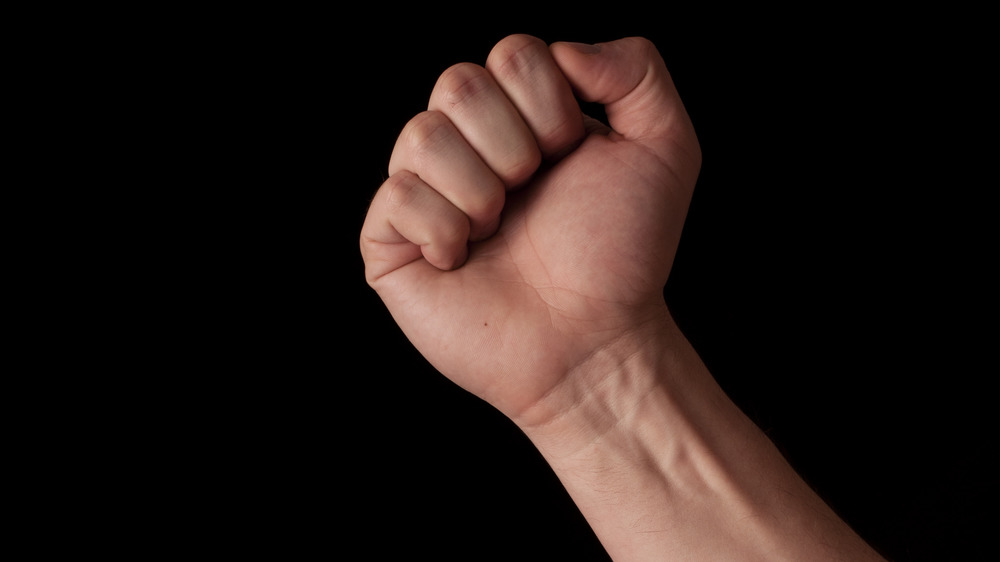The Forearm Muscle That Not All Humans Are Born With Anymore
With around 600 muscles in the human body, you have to assume at least a few aren't put to the test quite as often as others. Now that Netflix just auto-plays the next episode of the true-crime doc you're watching, you barely have to lift a finger, right?
The human body is an engineering marvel, evolved over millennia to keep us one step ahead of whatever ancient animals chased us, and strong enough to birth successive generations of humans on down the line. But over the years, as human living circumstances and physical needs changed, a few stubborn parts of our bodies that we no longer need have hung around. "Need" is a spectrum, though, as anyone who has had their tonsils out can attest. You can do just fine without them, but they're there to protect you from germs, says the NCBI. Most folks in the modern world won't notice much of a difference not having them. In fact, the body has lots of body parts that you either probably didn't know you had or some you straight up don't even need anymore. In fact, some muscles have become so unimportant, that many people no longer have them. If you're ready for a demo, roll up your sleeve and take a close look at your forearm.
The forgotten forearm muscle
Want to see how modern your muscle is? Turn your forearm over so your palms are facing up. Now make a tight fist. Ignore the veins—we've thankfully all got those — but look at the middle of your wrist. Do you see a ropy-looking muscle running vertically down your inner wrist? If you answered no, don't stress. It turns out that the palmaris longus is the most variable muscle of the human body, meaning that many people around the world were born without it.
Fascinatingly, its absence varies by region. In some areas of the world, only 1.5 percent of the people might be palmaris longus-less (that's a mouthful), while in others, nearly 64 percent of folks might not have the muscle, according to the National Institutes of Health. Based on data gathered from 32 studies, Zimbabweans are least likely to have the muscle, while those in Turkey are most likely.
It's even possible, says Physiopedia, that you may have one on your left arm but not your right. That's because it's considered a vestigial muscle, or largely functionless. For the lucky percentage who are keeping it old school, musculature-wise, the palmaris longus may offer you a smidge more wrist flexion (bending ability), according to Kenhub, but its most-valuable characteristic may be as a potential donor tendon, says Physiopedia. Screw up one of the tendons you actually use and your surgeon just might take this one to serve as a graft. Not bad for a supposedly useless body part!

